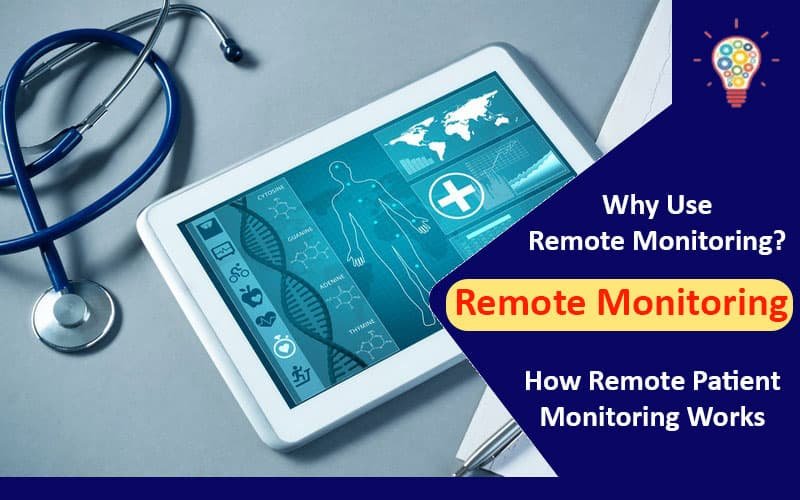If you’ve been to the doctor recently, you probably know all about telehealth and other remote services. What you might not know about is remote health monitoring.
Table of Contents
What Is Remote Monitoring?
Remote monitoring is the practice of using a device to collect health data while an individual goes about their daily life. There is a wide variety of useful information to healthcare practitioners such as heart rate, blood pressure, blood glucose and other vitals.
Sensors collect the data and send it to a relational database. That information is analyzed or viewed by a healthcare professional, and if connected, an app can display treatment recommendations, alert the patient, or alert emergency personnel. Although there are different remote health monitoring tools, they all work off the same principle.
Why Use Remote Monitoring?
Remote monitoring has several uses. It is not just to monitor patients under normal circumstances. It can allow a person to remain at home while still being tracked by doctors. It can provide cumulative data so doctors can how the patient is doing overtime without being stuck in a hospital bed.
Another reason to use remote monitoring is activity tracking. Some problems only occur when a patient is performing certain activities. Timestamps on the data can show doctors which activities cause a rise in heart rate, blood pressure and other vitals.
The daily updates on a patient’s condition can improve patient-doctor relations and help patients understand their health problems and risks. Many patients also enjoy having access to daily information about their illness, rather than waiting for test results or their next appointment.
Patients typically feel better when they are in control of their healthcare. Remote monitoring allows them to manage their health conditions and understand when they need to see a doctor rather than just relying on the doctor to tell them when they need to come in.
Does Insurance Cover Remote Monitoring?
Many insurance companies added remote monitoring to their policies with the advent of telehealth and other technologies. Some remote monitoring forms are now required by insurance companies before they will cover certain medical devices such as forced air equipment. Suppose the monitoring system alerts the insurance company and the doctor that the patient is not using the device. In that case, the insurance company may decline payment for the device or the monitoring.
Remote monitoring is not an entirely new technology. It is an expansion of an existing one. For years doctors have monitored patients who use insulin pumps, CPAP machines and pacemakers. Some devices such as pacemakers and insulin pumps could send and receive remote data since the late 90s.

